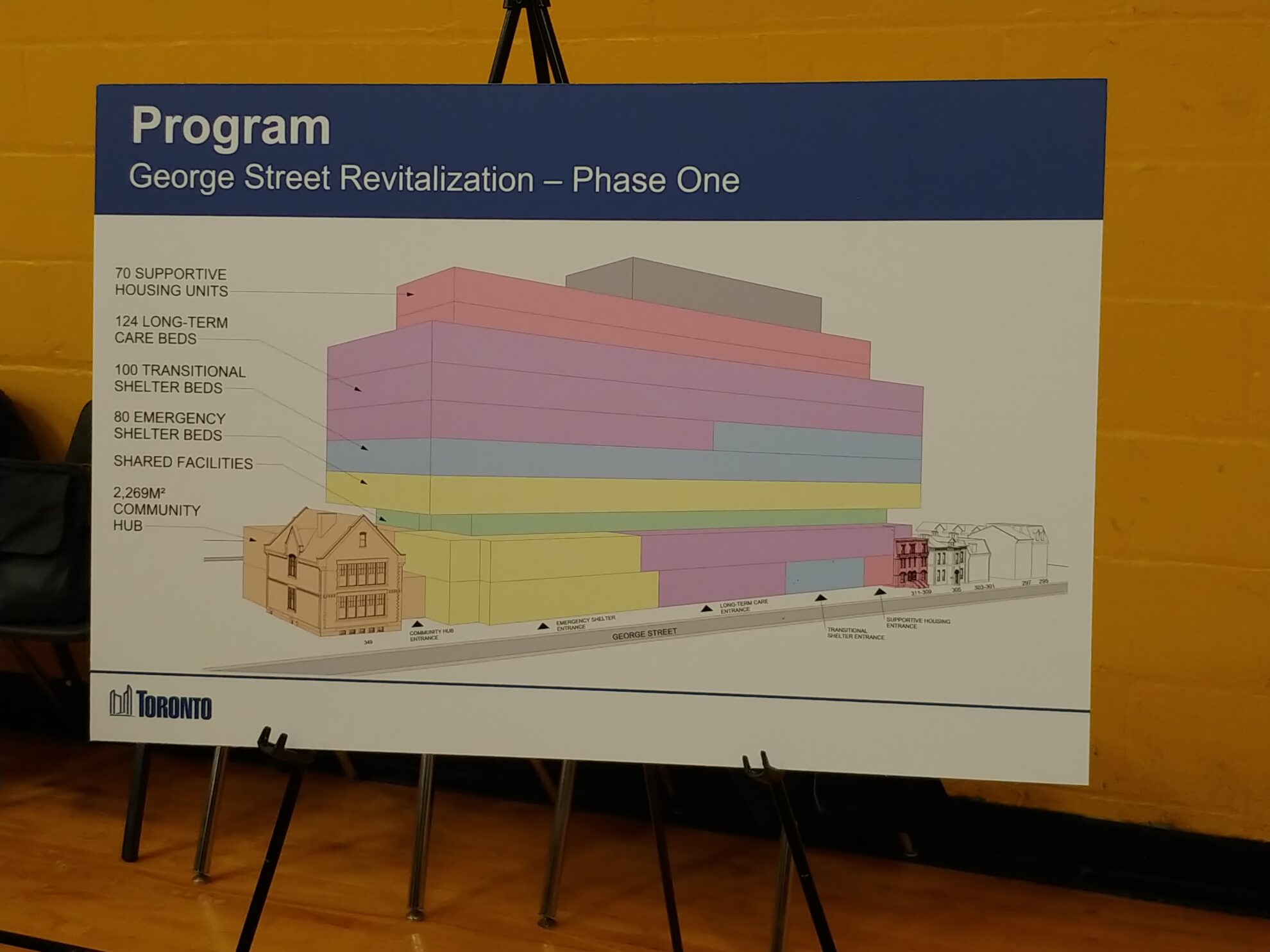Andre Bermon,
In the long-drawn drama that is the George Street Revitalization project, the city is finally on its way to putting shovels in the ground.
In an open house session hosted by city staff, the public got a first look at the new plans for George Street’s northernmost block, between Dundas Street and Gerrard Streets. They seemed both impressive and practical.
For those who have been following the project over the last 15 years, it is easy to doubt that the city has its ducks in order. Conceived back in 2009, and passed in principle in 2013, the redevelopment has seen nothing since but deliberations on a financial and construction model to tear down and rebuild the 65-year-old Seaton House shelter.
The most recent plan for Seaton House involved a public-private partnership (P3 or PPP) with the province and its Infrastructure Ontario agency. It was the first time the city entered such a relationship for a construction project; its inexperience showed.
According to city documents, the rationale was to “leverage” Infrastructure Ontario’s track record working with private corporations and save upfront financial costs. Under the P3 design-build-finance model, the private sector would take the risks, while the city would pay construction and financing costs upon its completion and assume responsibility for maintenance.
In the process the city spent millions on consultants and untold staff hours on procedures and countless reports to Council. Delays in the project timeline caused by the Covid-19 outbreak and disruptions in the construction sector were the cherry on top.
Years of fumbling P3 plans inevitably went nowhere, so the city officially pulled the plug in early 2024. Instead of going back to Infrastructure Ontario, Council decided to lead the project itself to “meet the original project vision … within the approved budget.” Council has earmarked approximately $560 million for the redevelopment.
The new program is by and large a scaled-down version of the previous P3 project. The Request for Qualification issued by Infrastructure Ontario and the City of Toronto in November 2020 called for 622,000 square feet of new construction, restored heritage buildings and streetscape improvements. It included a shelter program with 100 beds for homeless men, a 378-bed long-term care home, a 130-bed transitional living program for homeless people requiring intensive care and substance abuse support, 21 units of affordable housing and a community service hub.
In the new proposal, restored heritage buildings and streetscape improvements are kept but the facility’s mass and scaling are dramatically reduced – down to 80 emergency shelter beds, 100 transitional shelter beds, 124 long-term care beds, 70 supportive housing units and 2,269 square metres (about 24,000 square feet) of community space.
This would entail an overall reduction of about 255 beds, mostly in long-term care, in exchange for more supportive housing. It may seem like a letdown, given the need for more social services, but downsizing the scale of the project means a faster build time. A less complex plan can also start breaking ground sooner. According to city staff, construction is to start early next year, with a completion date in late 2029.
Another benefit of decreasing the project’s mass and scale concerns a yet-to-be-determined plot of land just south of the proposed new facility. This site, with several abandoned heritage buildings, would need its own bylaw amendment to allow community use. One obvious route would be to increase the number of non-market housing, such as rent-to-geared income units or co-ops.
Besides the site’s-built potential, what makes the project’s new version an improvement from its previous iteration is its emphasis on the continuity of care. Theoretically, someone entering the facility’s emergency shelter space could move up to a transitional bed and end up in supportive housing – all in one building. Furthermore, with all the bells and whistles of a traditional institution, it has the added bonus of a proposed community service hub.
This is something entirely unique to Toronto and indeed the province.
After years of wondering in the wilderness, the city has finally arrived at a tangible target to get the George Street Revitalization project going.
Let’s hope Council follows through.




